It was still winter in Colorado in March 2023 when we took off to San Francisco on a California escape. The area had had a stressful winter of heavy rains and our trip was sandwiched in between two more storms. But we had a beautiful day for walking Golden Gate Park.
 |
| Japanese Tea Garden, San Francisco |
The Japanese garden, formally the Japanese Tea Garden San Francisco, was established in 1894 as part of a Japanese Village at the California Midwinter Exhibition, a World's Fair. When that ended, the park was persuaded to make it a garden and a permanent fixture. At the time, Golden Gate Park was west of San Francisco; today San Francisco surrounds it.
The Japanese Tea Garden features traditional Japanese plants and landscaping. In March, to a visitor from winter, it was glorious.
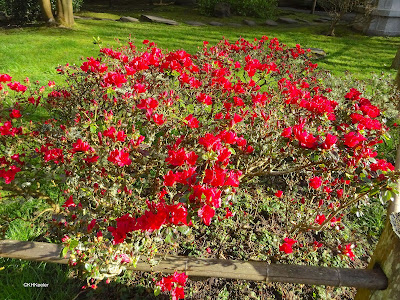 |
| rhododendron |
The Japanese Tea Garden's history also includes the tragedy of the treatment of people of Japanese ancestry in the United States during World War II. After the 1894 Exposition, Japanese landscape architect Makoto Hagiwara arranged to maintain the garden. He poured his personal wealth and expertise into it, living on the property with his family. He was removed as Director in 1901 after the passage of an anti-Asian amendment to the city charter, but he continued to manage the garden and in 1909, built his family home there. In 1942, his children and grandchildren were still managing the garden. They were all sent to internment camps by the United States government. The garden was renamed the Oriental Tea Garden. The Hagiwara house in the park was torn down, and the Tea Garden suffered from neglect. At the end of the war, the Hagiwaras did not, and indeed, with the house gone, could not, return. They got some portion of their possessions back eventually. Members of the family still live in the area, and some work with plants, but none are currently directly involved in the Tea Garden. You can imagine a very different outcome had the U.S. not interred people of Japanese ancestry during the Second World War.
 |
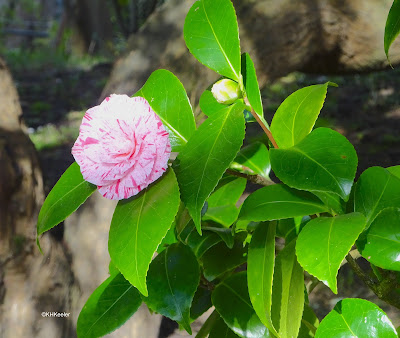 |
| camellia |
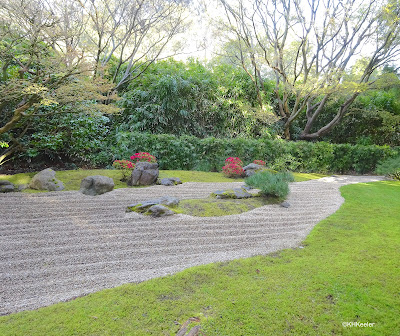 |
| Zen garden in Japanese Tea Garden, San Francisco |
Here is another lovely vista with beautiful details:
 |
Comments and corrections welcome.
References:
Golden Gate Park website https://www.japaneseteagardensf.com/
Hagiwara great-grandson talks about the garden: https://hanascape.com/japanese-tea-garden

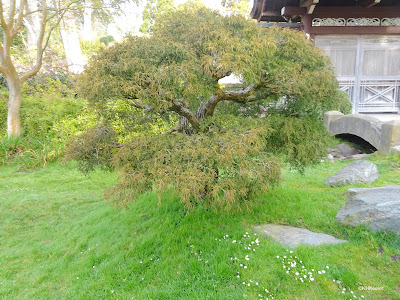



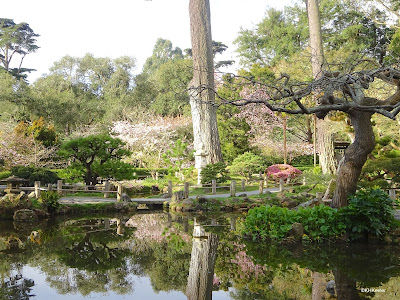

No comments:
Post a Comment